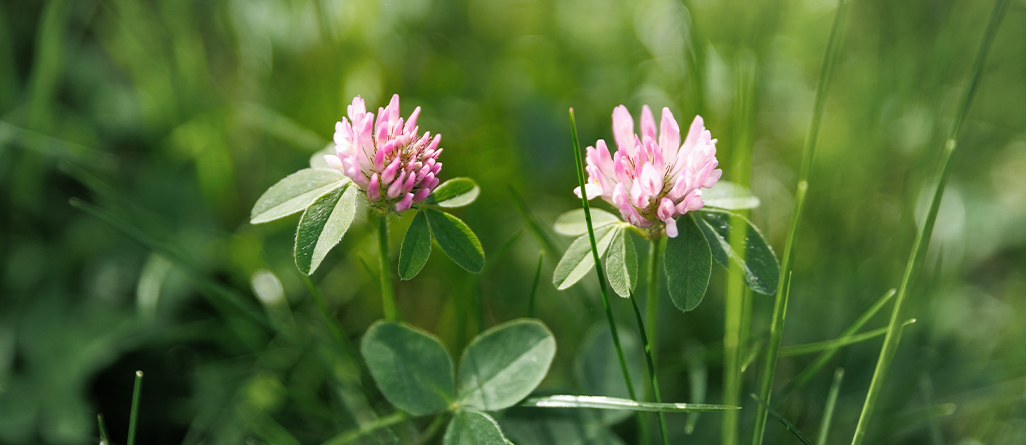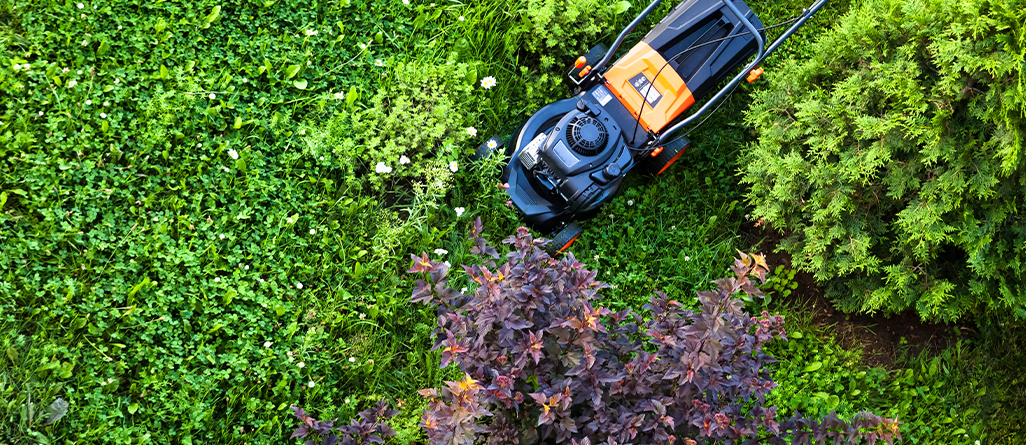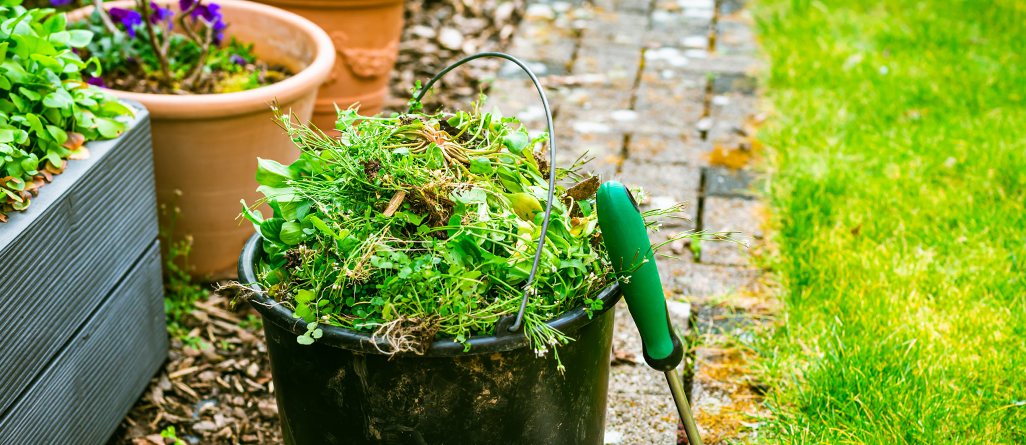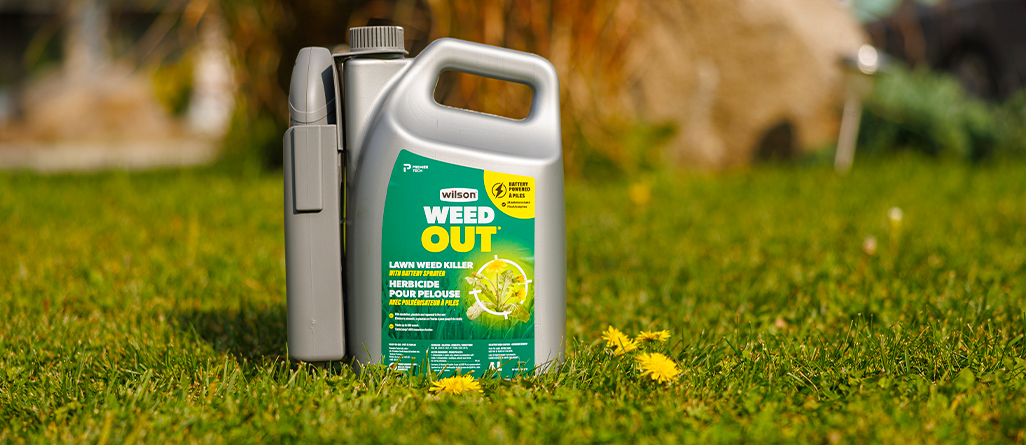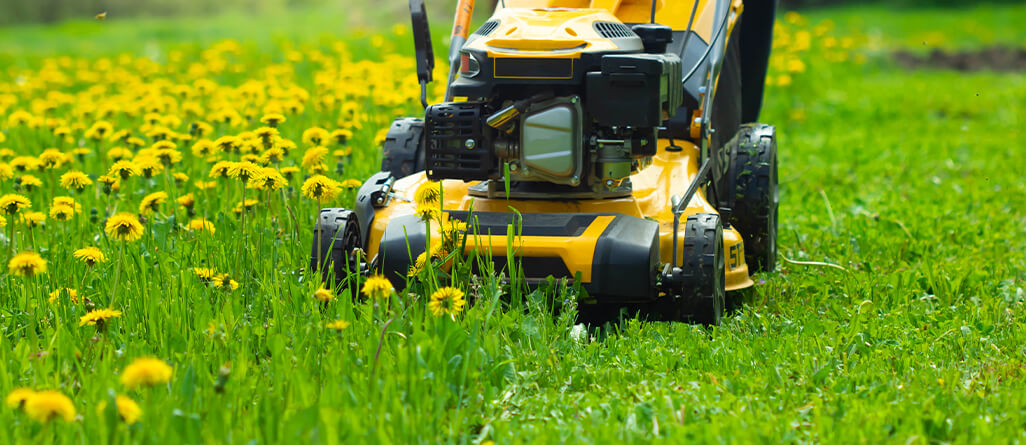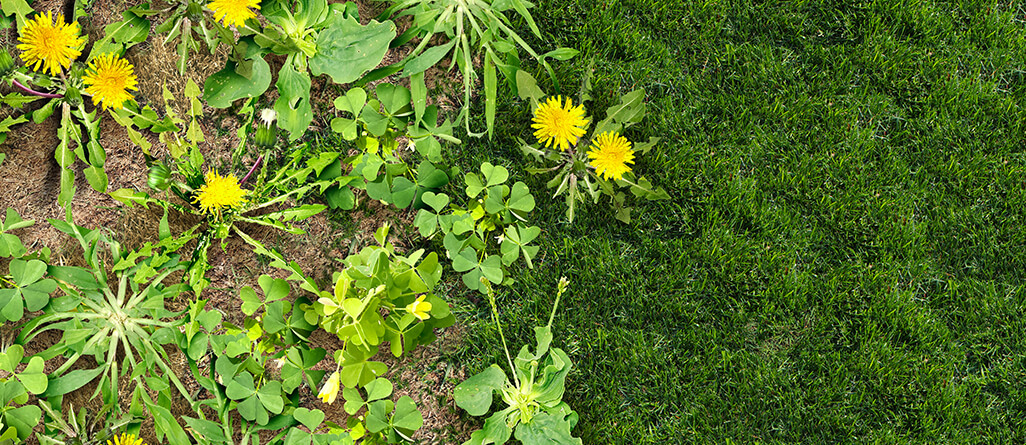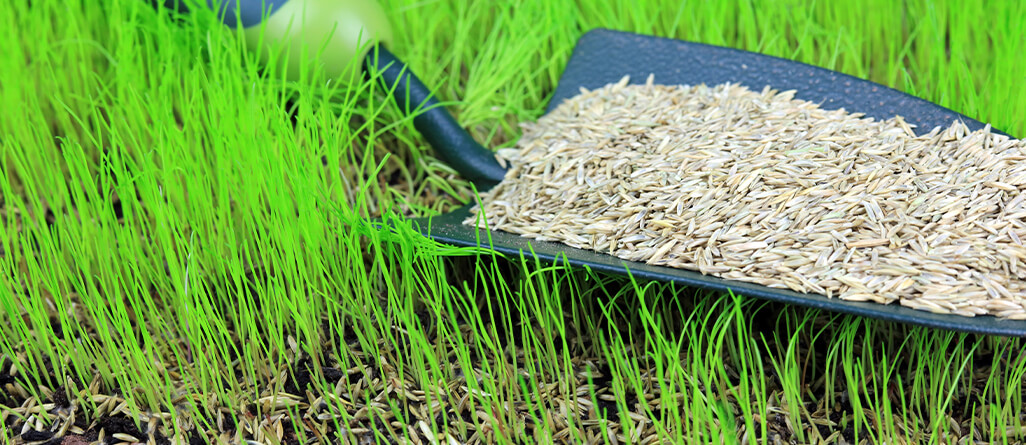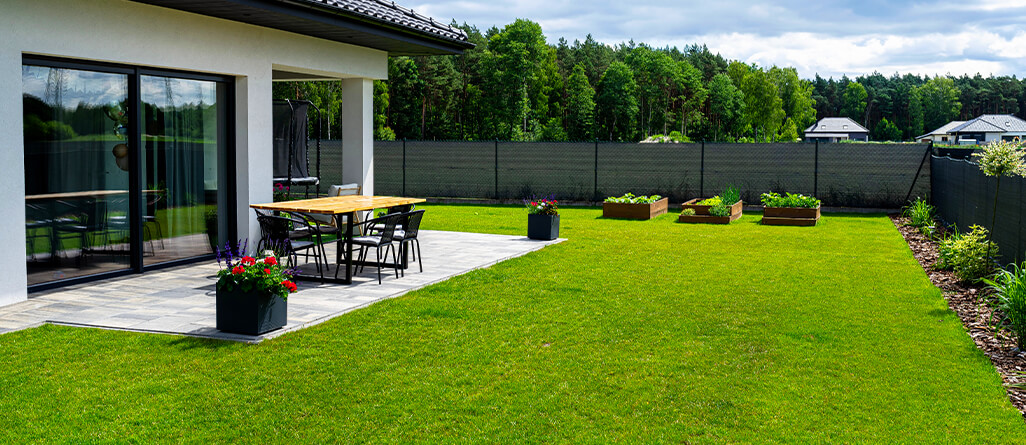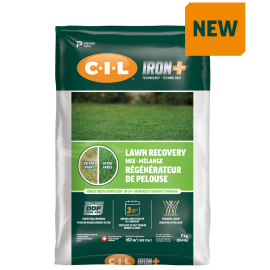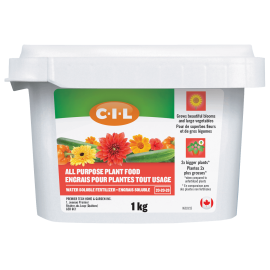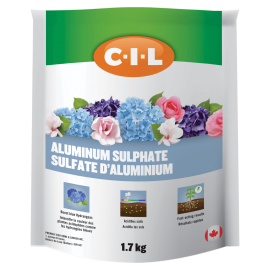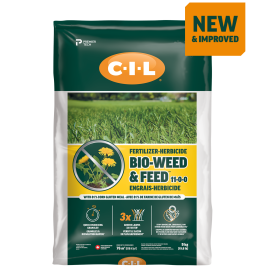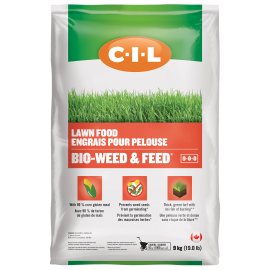How to revive a lawn full of weeds

The neighbours are talking… Are they talking about the “worst lawn on the block”?
Maybe you recently purchased a house with a really weedy lawn. It could be that your backyard lacks a nice cushiony layer of thick grass for the kids and pets to play on. Either way, if you have an interest in restoring the lawn to its former glory, read on.
What do you do if your lawn is mostly weeds?
Lawn weeds are unwanted plants that compete with desirable grass for nutrients, water and sunlight. Weeds can conquer a lawn in no time.
If you’ve let the weeds get out of control, trying to reclaim your lawn might feel a little overwhelming. But it is entirely possible to restore a weed-infested lawn.
Why is your lawn full of weeds?
If you cut your lawn too short, you have poor or compacted soil and you don’t fertilize or water it, or have insect damage, you will eventually grow more weeds than grass. Well-maintained grass plants tend to knit together to form a dense mat, while weeds remain as individual leafy plants that don’t offer that kind of cushion.
Cutting the lawn too short
Mowing too low lays bare the crowns of the grass to the full heat of the sun and the exposed spaces allow for weed seeds to find a place to germinate. The best height for grass is 8-10 cm (3-4”). At this height, you are shading the crowns from heat stress and making it more difficult for weed seeds to find an open spot.
Compacted soil
Grass plants cannot absorb sufficient nutrients and water in compacted soils, while weeds can. To check if your soil is compacted, look for signs like difficulty digging, standing water, stunted plant growth, and a hard, crusty soil surface. In that case, it is a good idea to aerate in spring or fall.
Poor soil
To flourish, lawns need a growing medium that is porous, nutritious, holds water yet drains well, and is packed with beneficial soil bacteria and fungi. Learn how to topdress your lawn in our other article. (Link to article on topdressing lawns)
Limited fertilization
As they grow, grass plants take nutrients out of the soil and it’s necessary to replenish those nutrients from time to time. Leaving clippings only partially returns them. You still need to fertilize. Consult our calendar to learn when.
Not enough water
Insufficient water will stress your lawn, allowing for weeds to take advantage, since many weeds survive well in drought situations.
Insect damage
When grubs, chinch bugs or sod webworms damage your lawn, weeds will take over.
How to transform a bad lawn?
Take a step back and assess the overall situation. Identify the core issue so that you can prevent similar problems after replanting. For instance, if you're dealing with harmful insects, addressing them should be your first priority. If compacted, maybe rent an aerator.
Next, you need to decide if there is enough existing grass to work with.
Scenario 1: If you notice a fair amount of healthy grass mixed in with the weeds or notice larger patches of strong grass in your lawn, there's a great opportunity to preserve what's there and enhance the area by killing the weeds and sowing high quality grass seed.
Learn how to overseed.
Scenario 2 : If the weeds make up most of the ground cover, it’s best to kill the top growth and start over.
How do you revive an existing lawn?
If going with the first scenario
The best time to get rid of established weeds is in spring or fall.
For these weeds, you’ll need a selective post-emergent weed killer like WEED OUT. Selective weed killers are effective when applied to the leaves of actively growing weeds, killing the weed but not the grass.
The goal is to apply the herbicide just before weed flowers release their seeds. Normally done in early to mid-May or early September.
It may take two applications to eliminate all the weeds. Wilson WEED OUT is an ecological selective weed killer approved in all provinces with cosmetic pesticide bans. Follow directions on label. Learn more here.
Don’t cut the lawn the week before using the herbicide, so that you have the most weed leaf surface exposed to absorb the herbicide. A second follow-up application may be required to control anything that got missed.
Best to hold off at least 2 weeks before proceeding with replanting.
Once the weeds have browned and died, cut your lawn shorter than usual, bagging the clippings or raking them up. Scratch all dead areas with a stiff rake to loosen the soil.
Add a good weed-free lawn soil or compost mix over these areas. Shovel or dump small piles of the soil mix all around the bare areas of your lawn and then spread it out into a thin layer using either a hard rake upside down, or a leaf rake. Broadcast a starter fertilizer with high phosphorus such as C-I-L Bone Meal 4-11-0.
Learn how to topdress the lawn.
Spread the grass seed with a spreader or by hand. Connect the seed and the soil by scuffling them together using your leaf rake as a broom - holding it with the tines pointing upward.
Tip: Since you are trying to improve your lawn, only use good quality seed mixes. Many bargain brand seeds contain annual ryegrasses that grow like weeds and die off in the fall. Look for seed mixes that contain bluegrass, fescues and perennial ryegrass. Find the answers to your questions about lawn seeds in our article.
Keep the soil moist. An oscillating sprinkler works best. You’ll need to water just 20 minutes at a time, but maybe twice a day until establishment, unless it rains.
Don’t rush to cut the grass again until the new seedlings are at least 10-12 cm (4-5”) high. Find more tips on lawn care after sowing in our other article.
What kills weeds but doesn't kill grass?
Safe for the environment and your family (the lawn can be used as soon as the product is dry), WEED OUT kills broadleaf weeds down to the roots without damaging lawn grasses.
WEED OUT was developed from a natural molecule and is authorized throughout Canada where chemical pesticides are prohibited. It is particularly effective at eliminating stubborn lawn weeds such as dandelions, plantains and ragweed.
Discover the best eco-friendly lawn products here.
How to completely restore a lawn by starting over
Scenario 2, that is, total kill and re-plant
You’ll need to spray a non-selective weed and grass killer like WIPE OUT that will eliminate all top growth. A second treatment might be needed to get 100% control. Follow directions on label.
Again, it is best to apply this weed and grass killer when plants are actively growing to get maximum absorption down to the roots. So early to mid-May or early September.
Alternatively, you could smother the lawn areas with black plastic or a tarp. This will require more time to be effective, so start earlier.
Once everything is brown and dead, lower the mower height very short and cut the dead top growth, bagging the clippings or raking them off.
Some people may want to run a rototiller to better prepare the soil before seeding. The problem with that is that you end up with clumps of dead sod that make it difficult to get an even flat surface. Unless you want to rake up the clumps, it is easier just to add soil on top.
At this point, you’ll need to get some soil. The ideal choice is to use weed-free compost or enriched lawn soil. Since you'll need a considerable amount to create a thin layer of 1.2 cm (½ inch) across the entire area, there are several companies that deliver 1-cubic-yard bulk bags of compost, triple mix or enriched black earth.
Some garden centres can also provide bulk materials that you can pick up personally. As a reference, a pickup truck with a 6-foot box can accommodate 1 cubic yard of bulk material. If you prefer, bags of enriched lawn soil or composted manure are available at your local garden centre and will work perfectly as well. For a 1,300-ft2 lawn area, you would need about one cubic yard of material. Or 30 bags of compost or lawn soil.
Spread the grass seed with a spreader or evenly by hand. Once spread, combine the seed and the soil by scuffling them together using your leaf rake as a broom - holding it with the tines pointing upward.
Keep watering lightly until you have establishment. Wait until the grass blades are at least 10-12 cm (4-5”) high before cutting the grass.
How to prevent weeds from coming back
When you re-seed a lawn, you should note several things. One is that a good blend of bluegrass, fescue and perennial ryegrass will germinate at different times: bluegrass in 21-30 days, fescue grass in 10-14 days and ryegrass in 5-10 days. So be patient, understanding that the full mix will take at least a month to germinate and get established.
Learn more here: How to choose the best grass seed for your lawn
The other thing to note is that a few weeds might creep in. Most of these weeds will be annual ones that will die off in the fall… Just keep mowing the lawn to keep those annual weeds from flowering.
To tackle the few perennial weeds, like dandelion, that may pop up, it's usually best to hold off on using a selective weed killer as a spot spray on a newly seeded lawn for about 5-6 weeks or after you've mowed it 4-5 times. That gives the young grass a chance to develop a root system.
Once you have regained your lawn, make sure that you feed it 2-3 times a season with a good lawn fertilizer, cut it at a height of 10 cm (4”) and spot spray any broadleaf weeds that show up.
